[Editor’s Note: Combat veteran and amateur military historian Charles Herrick’s crucial earlier posts in this series corrected 70 years’ worth of miscaptioning of one of Robert Capa’s ten D-Day photographs from Omaha Beach, and pinpointed the exact location and approximate time at which he landed on the Easy Red sector with a later wave.
In this new article, Herrick examines 16mm color film footage of D-Day by U.S. Coast Guard Chief Photographer’s Mate David T. Ruley. Ruley filmed the invasion from his assigned position on board LCI(L)-94 — coincidentally, the very vessel on which Capa departed from Easy Red. Ruley’s film contains brief glimpses of Capa, providing unimpeachable proof of his presence on board that vessel, thus confirming the time of his taking leave of the battlefield. These are some of the few filmed images of Capa in action, and the first — most likely the only — still or motion-picture images of him on D-Day.
Herrick compares the evidence in Ruley’s film with relevant photographs (by Capa and others), deriving further information about conditions on the Easy Red sector of Omaha Beach at the time of Capa’s departure therefrom, among other matters. You can enlarge all the illustrations by clicking on them. Part 1 appears below; click here for Part 2. — A. D. C.]
•
Capa on D-Day: After the Beach
by Charles Herrick
Verifying Robert Capa’s whereabouts at any given point or time on D-Day has proved difficult, to say the least. While he did leave two somewhat different and conflicting accounts, one dictated a few days after the landing and the other in his 1947 memoir, they cannot be corroborated by others who were present.
Whenever Capa claimed to have run into specific men, he is strangely absent from their accounts. And while he figures in the reminiscences of a number of veterans, close examinations of the details quickly show the timelines or locations are so greatly at variance with the verifiable facts that the stories must be discounted. (The several claimants to the role of subject for “The Face in the Surf,” Edward K. Regan and Huston “Hu” Riley, are perfect examples of this.)
Only one usually reliable witness recorded seeing Capa on Omaha Beach: John H. “Beaver” Thompson, the redoubtable combat reporter for the Chicago Tribune. Unfortunately, Thompson’s account — written 25 years after the fact — conflicts with parts of Capa’s versions. And for all his fame as a frontline reporter, Thompson’s memories placed him on the wrong attack transport and moved his landing time forward almost an hour closer to H-Hour than was the case. As a result, one isn’t quite sure what can be trusted in Thompson’s account. And, typically, Capa made no mention of seeing Thompson on D-Day, so the dots do not quite connect.
 [Editor’s note: You can read Thompson’s reminiscence here: “2 Tribune Men Relive GI Drive Into Normandy: Thompson Lands with Yanks on Assault Boat,” Chicago Tribune, June 1, 1969, pp. 1-2.]
[Editor’s note: You can read Thompson’s reminiscence here: “2 Tribune Men Relive GI Drive Into Normandy: Thompson Lands with Yanks on Assault Boat,” Chicago Tribune, June 1, 1969, pp. 1-2.]
The lack of credible corroboration has meant that, at virtually every stage of Capa’s movements, there has been confusion. Questions have arisen as to which attack transport carried him to Normandy; in which wave he landed; with which unit he landed; and where he landed. Fortunately, Capa’s retreat from the beach is much easier to trace.
Capa almost certainly rode in with Col. George Taylor and his staff in the thirteenth wave, which left the U.S.S. Samuel Chase just before 0600 and, due to some delays, landed on Easy Red at 0815-0820. According to my reading of the records, LCI(L)-94 beached at Easy Red at approximately 0830. So the evidence indicates that approximately 30 minutes passed between the moment Capa stumbled ashore on the Easy Red sector of Omaha Beach (with the possibly fictional assistance of a boot to the rear from an LCVP crewman) and the time that the craft he was fleeing on was shelled at 0850 hours as it pulled away from the beach, finally making its departure at about 0900 hours.
Now that the legendary “darkroom accident” story has been debunked, it seems clear that Capa took only ten or eleven photos during his brief stay on the beach. Judging from the level of the tide in his photos, all those pictures were taken within ten minutes of landing. No evidence whatsoever exists to support the claims that Capa stayed longer and took more pictures, or even the assertions that he reached dry land.
Capa’s flight from the beach can be said to have begun with his negative 37, the famous photo known as “The Face in the Surf” (figure 1). In the upper-right background of the photo there appears a blurred object that I have identified as a Landing Craft, Infantry (Large). LCI(L)s were the only craft with that size and shape beaching that day.
Although Capa later included in his memoir incorrect details that led many to believe he retreated on LCI(L)-85, in fact there was clear evidence he fled on LCI(L)-94, which beached at the same spot that Capa’s incoming LCVP had reached just minutes before. It was likely, therefore, that the incoming LCI(L) in “The Face in the Surf” was the 94. It was a good theory, but lacked proof.
Then Allan Coleman noticed a few brief sequences in the video “At the Beaches of Normandy.” Those sequences, taken from an LCI, offered a vista that resembled Capa’s landing site. One sequence in particular appeared to show the exact spot at which Capa landed, during the same narrow window of time. One scene showed troops debarking from an LCI, with tank dozer #10 in the center background (figure 2).
Coincidentally, this vehicle also featured prominently in Capa’s beach photos. His initial series of five exposures was taken from the ramp of his LCVP, and three of those exposures show tank dozer #10 to his left front (figure 3). We now had a common point of reference for the two separate cameramen.
Better than that, as he proceeded toward the beach, Capa took shelter behind a hedgehog and then behind that same tank dozer #10. Somewhere between the two positions, he took “The Face in the Surf” (figure 1). Given the new film clip (figure 2) and Capa’s “Face in the Surf,” it appears that Capa was taking a picture in the general direction of that LCI at about the same time someone on that LCI was taking a picture while pointing his lens toward Capa. Comparing the two images (figure 4), we find the same obstacles are visible in both.
In essence, the two images were captured on almost exactly reciprocal azimuths. Almost. Capa’s was taken a bit earlier, as the LCI was still close offshore, whereas the clip made from the LCI’s boat deck was taken after the craft had beached. The difference in relative positions results in slightly different alignment of the obstacles between the two images, but otherwise it is clear that we’re looking at the same scene from nearly opposite directions.
The film clip was plainly taken within a very few minutes of Capa’s “Face in the Surf” photo. With the tide rising one foot about every 11 minutes at that point, even a 15-minute passage of time would be obvious. When comparing the tide levels in the two images, they appear to be virtually the same.
•
LCI(L)-94 had among its crew Chief Photographer’s Mate David T. Ruley, a Coast Guard motion-picture cameraman. His D-Day footage was featured in “Normandy Invasion,” a fundraising Coast Guard film released in December of that year, then more prominently in the January 1945 Coast Guard/Warner Brothers movie “Beachhead to Berlin,” and was subsequently incorporated into many later documentaries. Ruley seemed to be the obvious source for the clip Coleman spotted in “At the Beaches of Normandy,” but exhaustive searches have failed so far to find that particular clip among the available Ruley files. So we had to make the connection the hard way.
Fortunately, Lt. Gene R. Gislason, captain of the 94 (figure 5), was an amateur photographer who, contrary to regulations, took photos with a personal camera on D-Day. Copies of some of these were donated to the National D-Day Museum [now renamed The National WWII Museum] by LCI(L)-94 crewman and fellow amateur photographer Charles Jarreau. One of those photos (figure 6, left half) showed the deck cargo aboard the 94 in clear detail. That cargo consisted of the excess cases of rations that had been brought aboard to feed the troops during the staging of the invasion.
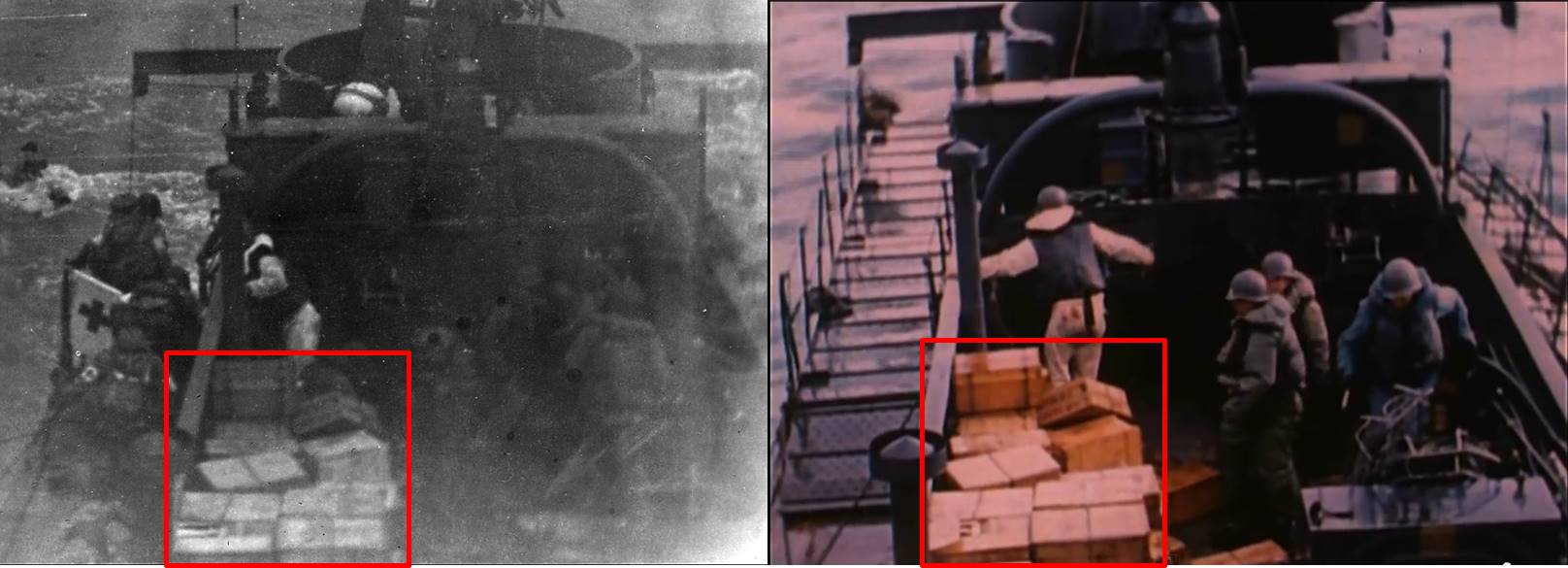
Fig. 6: View of rations stored on deck of LCI(L)-94 on D-Day, photo by Lt. Gene R. Gislason (l); same view, same day, frame from USCG D-Day film by David Ruley (r)
Coincidentally, another brief sequence from “At the Beaches of Normandy” showed the exact same scene as that in the captain’s personal photo (Figure 6, right half). The ship’s configuration, rigging and even random placement of deck cargo were identical. It was the same craft, which meant this unattributed clip was Ruley’s work.
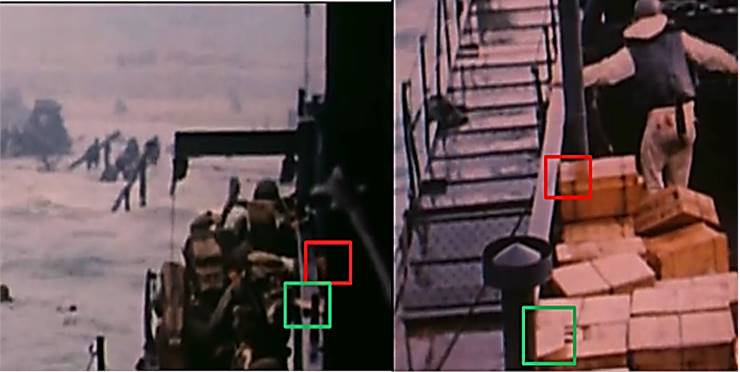
Fig. 7: Debarkation from LCI(L)-94, D-Day (l); view of rations stored on deck of LCI(L)-94 on D-Day (r). Both frames from USCG D-Day film by David Ruley.
The next link in the chain of identification was a bit less definitive. Comparing the image of the main deck with the debarkation clip (figure 7) revealed similarities. The top of one ration case was visible in the debarkation clip, and appeared to be the same one in the deck images. The chances that the rations had been consumed at identical rates on different ships, and that the remaining stack of cases would be placed at the same random angle seemed too great. It appeared they must be the same craft.
In the debarkation clip, we can see another detail: the open flap of one of the ration cases is lying across the gunwale. In the deck clip, there is a half-open case at that same spot, though in those frames the unsealed flap is loosely closed. Apparently the wind had blown the flap open in the interim.
Although this last link was far from definitive proof, it strongly suggested that the clip showing troops debarking from the LCI was indeed shot from the 94, and therefore was Ruley’s work as well. It also tended to confirm the conclusion that the blurred vessel in the background of “The Face in the Surf” was indeed the 94.
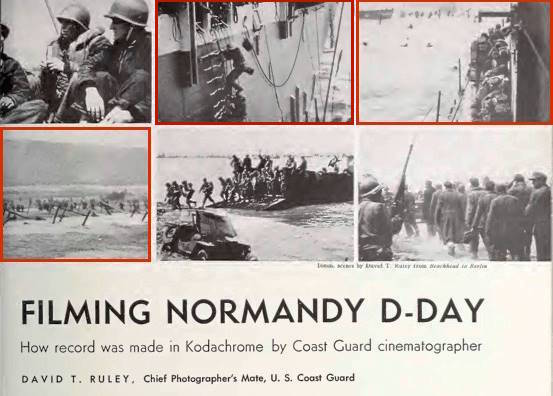
Fig. 8: Cinematographer David T. Ruley, illustrations for first-person account of D-Day experiences, Movie Makers magazine, 6/1/45
Conclusive proof of this was found by Coleman when he discovered a 1945 article in Movie Maker magazine in which Ruley described his D-Day experiences. The article included six frames it attributed to Ruley (presumably supplied by him as illustrations) that had been used in “Beachhead to Berlin” (figure 8). Two of these images were those originally spotted by Coleman in “At the Beaches of Normandy,” and one was from the clip showing troops debarking from another ship as seen from LCI(L)-94. All the threads had come together.
As luck would have it, however, I still have not been able to find the original reel of Ruley’s film containing the sequences included in “Normandy Invasion,” “Beachhead to Berlin,” and “At the Beaches of Normandy.” One of the reels I did find, however, contained something at least as important: three short scenes showing Robert Capa after he left the beach. To my knowledge, these are the only known images of Capa taken on D-Day. We’ll turn to those next.
(Part 1 I 2)
•
[Editor’s Note: Ruley recounted his D-Day experiences in his 1945 article, “Filming Normandy D-Day: How record was made in Kodachrome by Coast Guard cinematographer.” (Movie Makers 20:6, June 1945, pp. 213, 228-30. Click here for a PDF download; click here to read it online.) He doesn’t provide much in the way of specifics, and doesn’t mention Capa, even though they obviously met and photographed shoulder to shoulder from the boat deck of the landing craft. But the article does provide some context for Ruley’s own work that day and, by extension, Capa’s work both before and after he boarded LCI(L)-94.
The film units of the U.S. Army and Navy assigned to the Normandy invasion, under the guidance of such directors as John Huston and George Stevens, used handheld but heavy and cumbersome 35mm film cameras and (mostly) b&w film. Like the other branches of the military, the U.S. Coast Guard standardly equipped its cinematographers with 16mm cameras — cheaper, lighter, more portable — and both b&w and color film.
At the time, the industry referred to 16mm film as “non-theatrical,” with the connotation of unprofessional — understandably, given that amateurs constituted this format’s primary market. The press followed that practice. Yet many who worked with 16mm film and cameras took umbrage at that classification; so did many who used the projection of 16mm films for business and educational purposes. See the editor’s note introducing Ruley’s article. See also this December 9, 1944 Billboard article, “ANFA Banquet Opens 6th War Loan Campaign.”
The accompanying piece on the same Billboard page, “‘Normandy Invasion,’ Coast Guard Pic, to Boost Bonds,” datelined Washington, DC, December 2, notes the release of a 20-minute USCG-produced film about D-Day, much of it shot in 16mm. This film, in black & white, includes at least one clip by Ruley from his work aboard LCI(L)-94.
Almost simultaneously, on January 6, 1945, Warner Bros. released “Beachhead to Berlin,” a 21-minute film “produced in cooperation with and photographed by the United States Coast Guard.” I have recently discovered that the video to which I directed Herrick’s attention and to which he refers above, “At the Beaches of Normandy (In Colour) June, 1944,” scenes within which initiated this search of the D-Day film archives, is simply “Beachhead to Berlin” with its opening and closing credits deleted.
This commercially released 35mm film, “Printed in Technicolor,” also includes a number of clips by Ruley. An article about this film in the Decatur Daily Review from December 26, 1944 (p. 6) notes that at the premiere in Washington “many … high ranking Coast Guard officers were present, along with David Ruley, chief photographer’s mate and color cameraman.” This suggests that the USCG placed a particularly high value on the documentation Ruley produced on D-Day, enough so to warrant bringing him stateside for this public-relations event.
So far, I have not learned anything further about Ruley, who appears to have included a glimpse of his own bloodstained camera case in his footage from the morning of June 6. Since 1944, however, his footage, usually uncredited to him, has appeared in dozens of D-Day documentaries, most recently the imminently forthcoming PBS film “D-Day: Over Normandy,” directed by Tim Gray, which includes most of the clips discussed in these posts, as seen in this trailer. High time Ruley got some recognition for what he filmed that day. — A. D. C.]
(Part 1 I 2)
Text copyright © 2017 by Charles Herrick. All rights reserved.
•
(For an index of links to all posts in this series, click here.)
•
This post supported by a donation from Colleen Thornton.
•
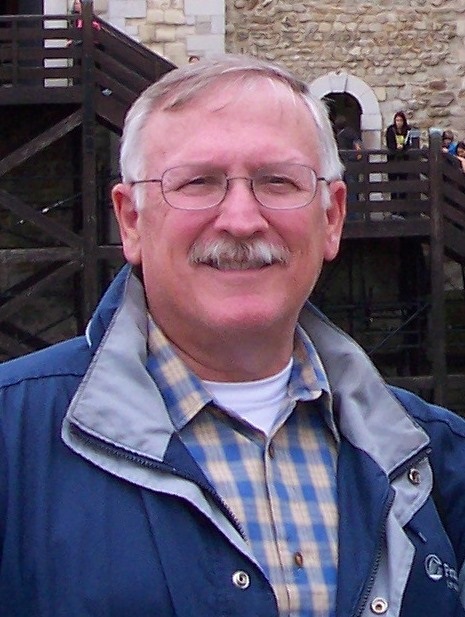 Charles Herrick joined the U.S. Army in 1970 and graduated from the U.S. Military Academy at West Point in 1974. Commissioned in the Infantry, he earned the Ranger tab and Master Parachutist’s wings. He served in a variety of positions from company grade officer to the Pentagon. He earned the Combat Infantryman’s badge while assigned as the Operations Officer of the 193rd Infantry Brigade in Panama in 1989, and later graduated from the U.S. Army War College.
Charles Herrick joined the U.S. Army in 1970 and graduated from the U.S. Military Academy at West Point in 1974. Commissioned in the Infantry, he earned the Ranger tab and Master Parachutist’s wings. He served in a variety of positions from company grade officer to the Pentagon. He earned the Combat Infantryman’s badge while assigned as the Operations Officer of the 193rd Infantry Brigade in Panama in 1989, and later graduated from the U.S. Army War College.
Since retiring from the Army in 1996, Herrick has continued to work on defense issues as a contractor in East Asia, Latin America, the Balkans, Africa and Central Asia. He holds an MBA from the University of California at Los Angeles. He lives in California with his wife, where he pursues his passion for military history. To contact Charles Herrick, click here.


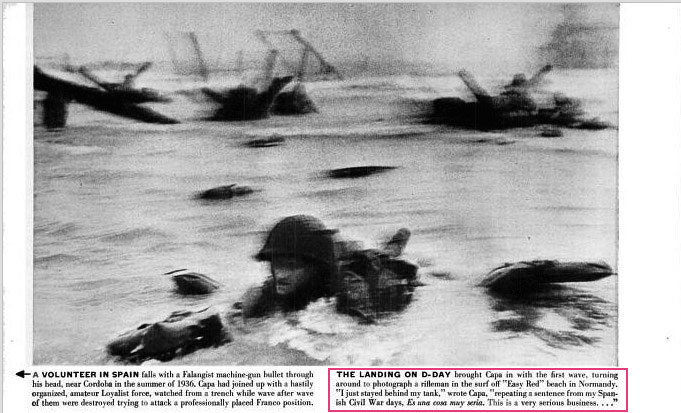
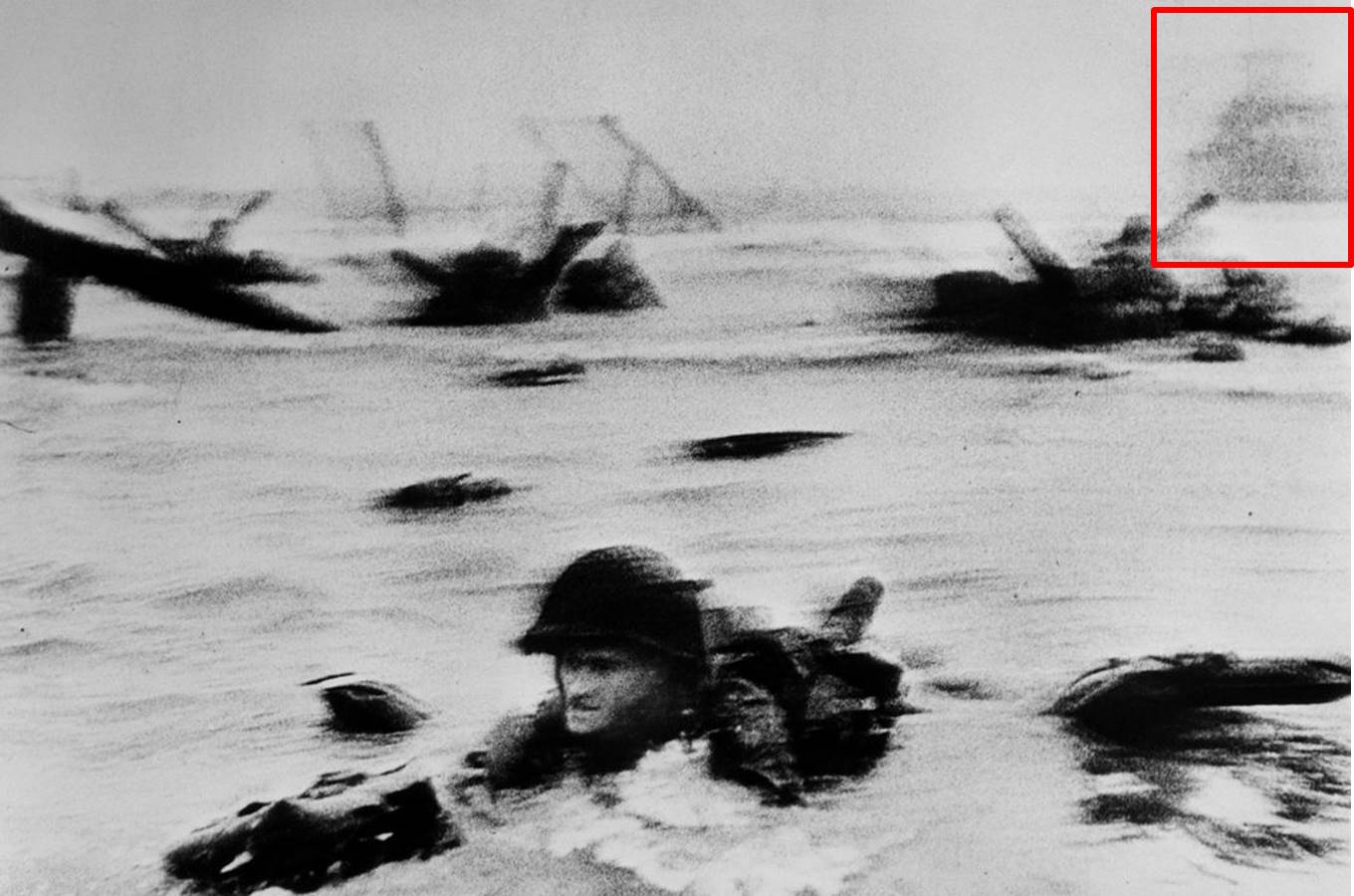
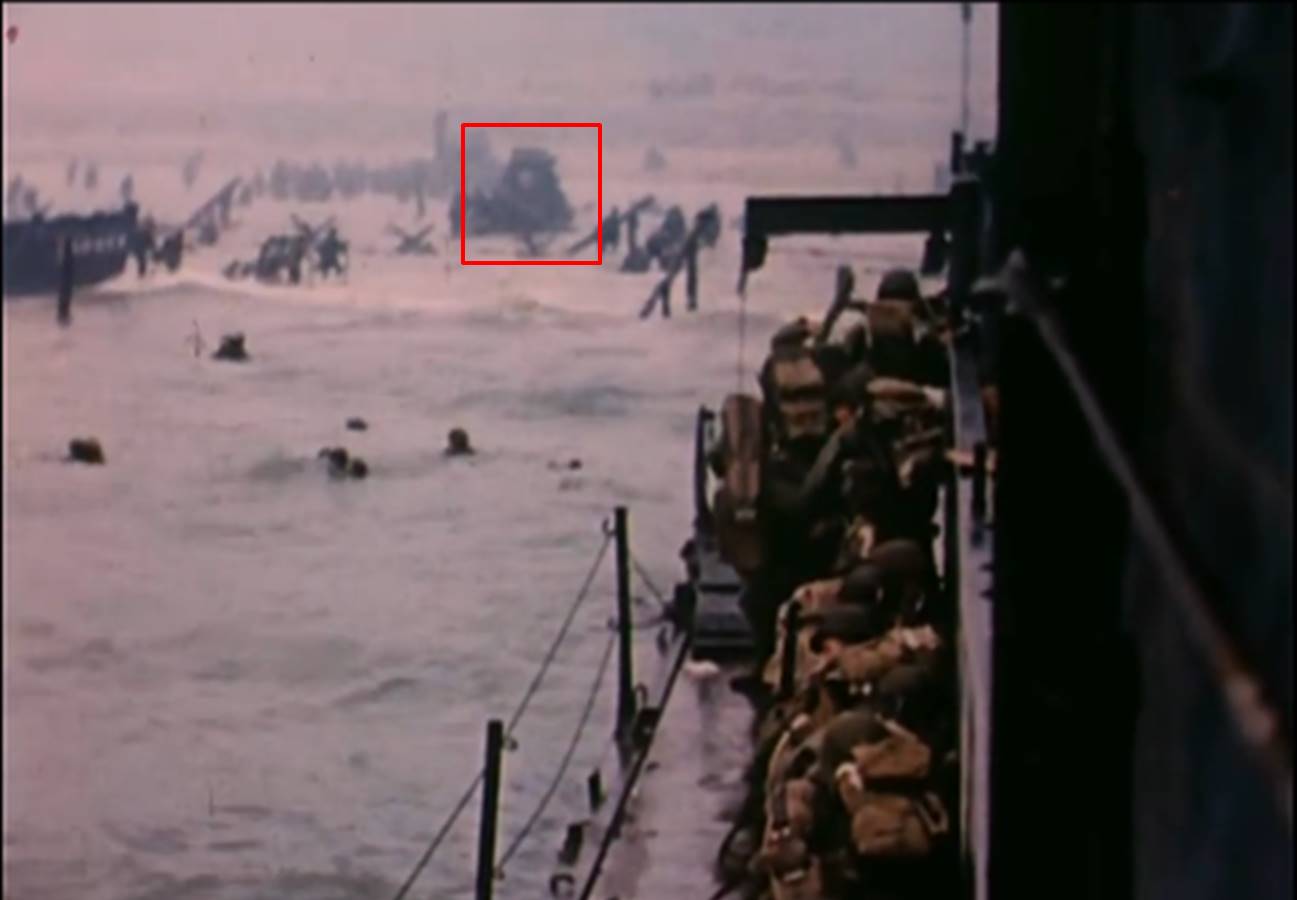
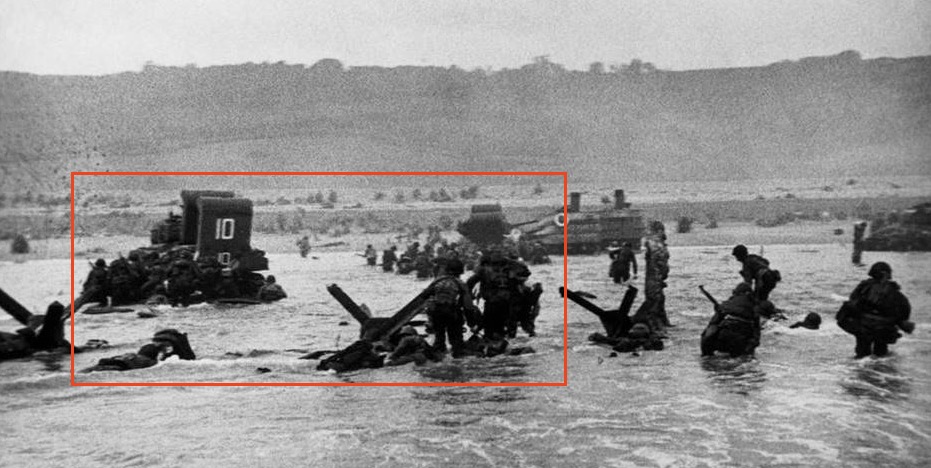
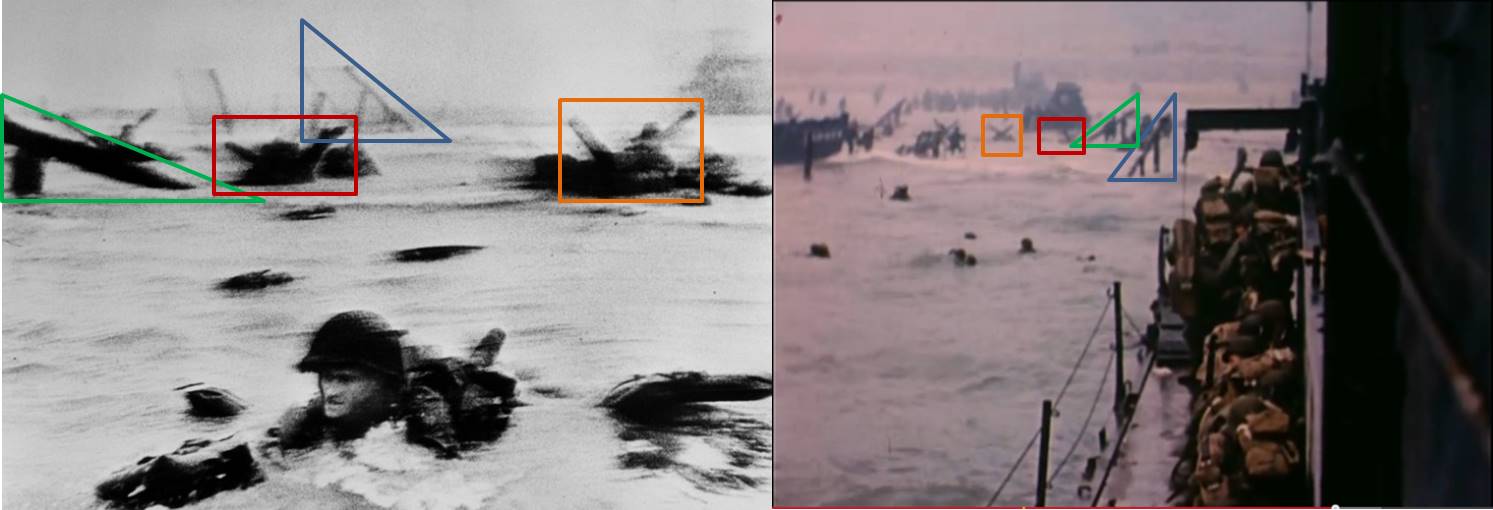
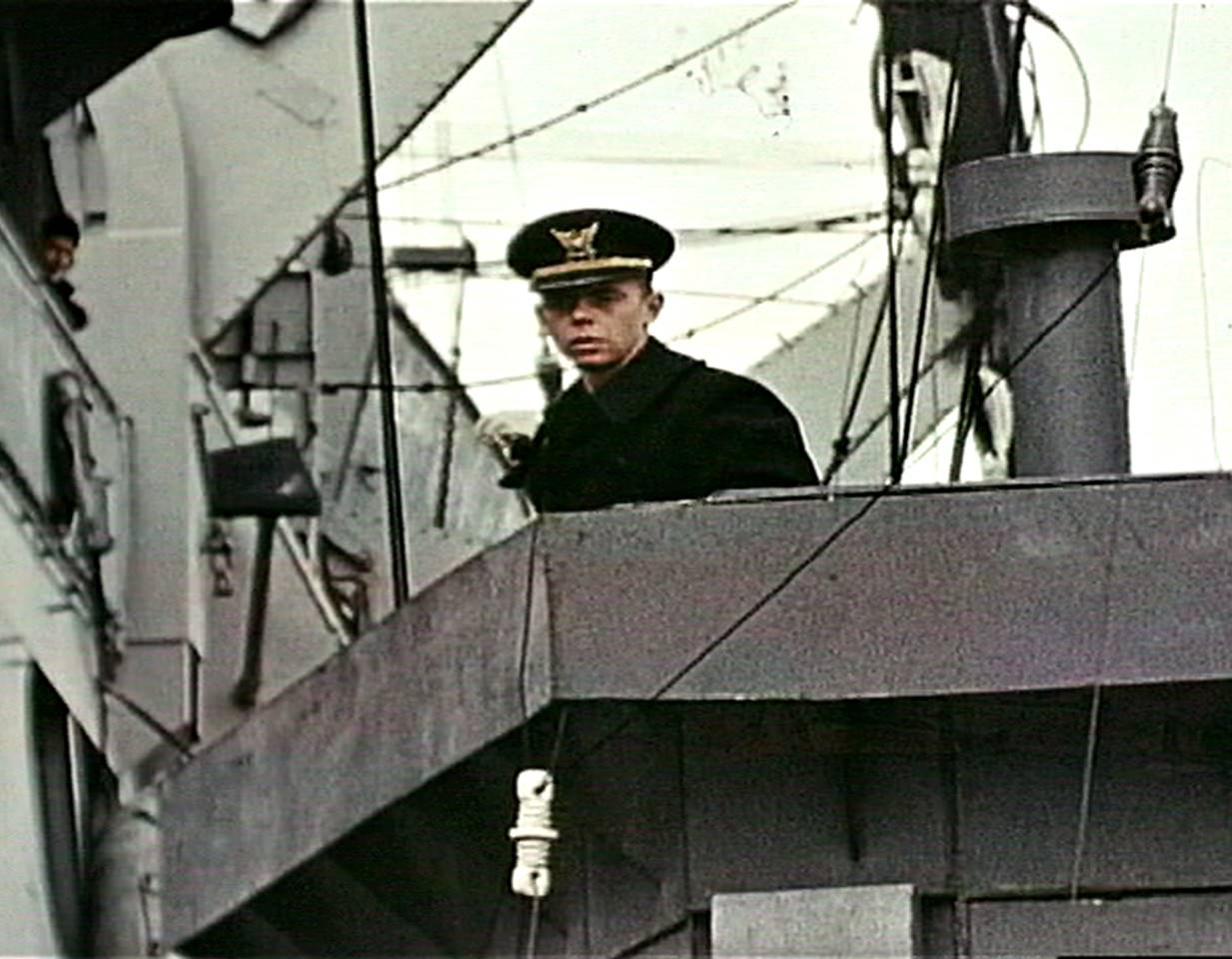
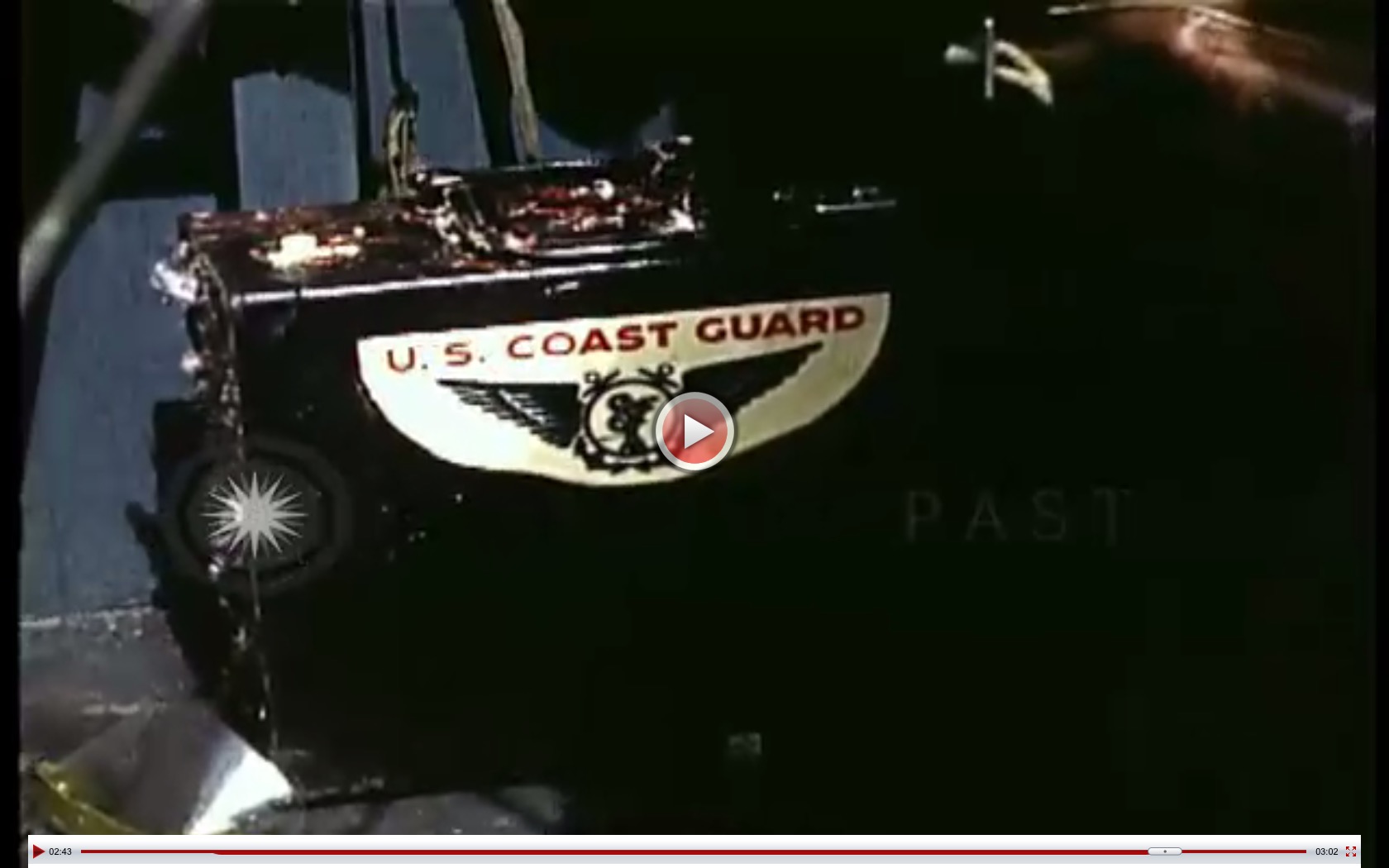




Leave a Comment